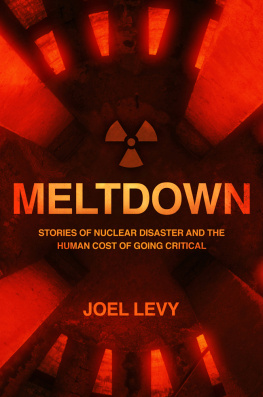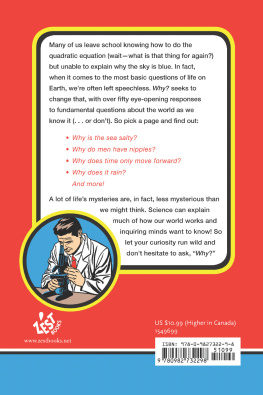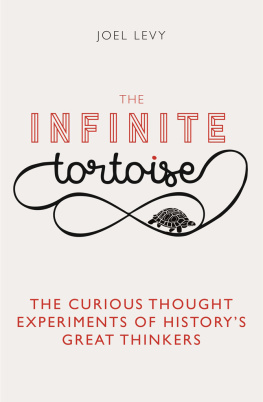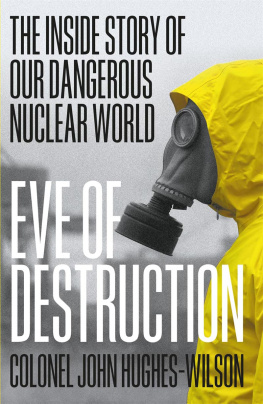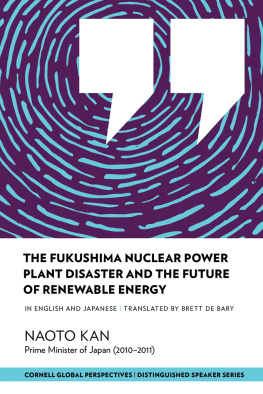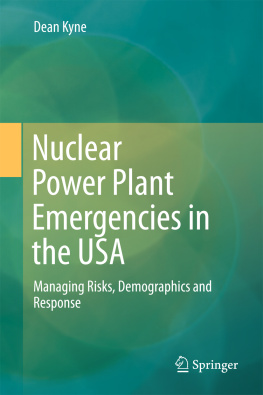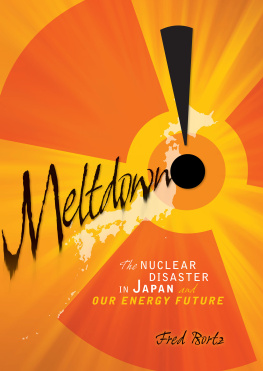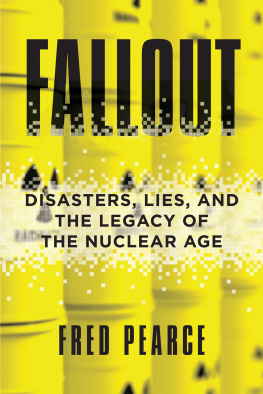MELTDOWN
OF NUCLEAR DISASTER AND THE HUMAN COST OF GOING CRITICAL
JOEL LEVY
CONVERSION TABLE
| SI Unit | Customary or Common Unit equivalent |
|---|
| Radioactivity (rate of emission of radiation) |
| 1 becquerel (Bq) = 1 radioactivedecay event per second |
| 37 gigabecquerels (GBq) | 1 curie (Ci) |
| 37 megabecquerels (MBq) | 1 millicurie (mCi) |
| Exposure (rarely used) |
| 0.000258 coulomb/kilogram (C/kg) | 1 Roentgen (R) |
| Absorbed dose (depends on the exposure and the type of material) |
| 1 gray (Gy) | 100 rad |
| Effective dose (measure of biological impact of absorbed radiation) |
| 1 sievert (Sv) | 100 rem (roentgen equivalent man) |
| 1 millisievert (mSv) | 0.1 rem |
Prefixes Often Used with SI Units
| Multiple | Prefix | Symbol |
|---|
| 1012 | tera | T |
| 109 | giga | G |
| 106 | mega | M |
| 103 | kilo | k |
| 10-2 | centi | c |
| 10-3 | milli | m |
| 10-6 | micro |
| 10-9 | nano | n |
To Finn, Isaac and Michelle, for past meltdowns and future critical excursions.
Thanks to Issy Wilkinson at Welbeck, for cooking up the idea with me and guiding this project, and to Alison Moss for sympathetic editing.
The publishers would like to thank the following sources for their kind permission to reproduce the pictures in this book
Plate photographs in order of appearance: Science History Images/Alamy Stock Photo, Universal History Archive/Shutterstock, Atomic/Alamy Stock Photo, Los Alamos National Laboratory, Castle Light Images/Alamy Stock Photo, Katherine Jacobsen/AP/Shutter-stock, Hulton-Deutsch Collection/CORBIS/Corbis via Getty Images, AP/Shutterstock, Everett Collection/Shutterstock, Dirck Halstead/The LIFE Images Collection via Getty Images/Getty Images, George D. Lepp/Getty Images, AP/Shutterstock, Media Production/ Getty Images, Photo 12/Universal Images Group via Getty Images, Juliane Thiere/Alamy Stock Photo, Str/AP/Shutterstock, Graham Harries/Shutterstock, DigitalGlobe via Getty Images, Keystone/Zuma/Shutterstock
Every effort has been made to acknowledge correctly and contact the source and/or copyright holder of each picture and Welbeck Publishing apologises for any unintentional errors or omissions, which will be corrected in future editions of this book.
Published by Welbeck
An imprint of Welbeck Publishing Group.
20 Mortimer Street,
London W1T 3JW
First published by Welbeck in 2020
Copyright Joel Levy, 2020
Joel Levy has asserted his right under the Copyright, Designs and Patents Act, 1988, to be identified as Author of this work.
All rights reserved. No part of this publication may be reproduced, stored in a retrieval system, or transmitted in any form or by any means, electronically, mechanical, photocopying, recording or otherwise, without the prior permission of the copyright owners and the publishers.
A CIP catalogue record for this book is available from the British Library
ISBN
Paperback - 9781787394995
eBook - 9781802790481
Typeset by IDSUK (DataConnection) Ltd.
Printed at CPI UK
10 9 8 7 6 5 4 3 2 1
www.welbeckpublishing.com
INTRODUCTION
O n 14 December 1940, at a laboratory in Berkeley, California, scientists crowded around a machine that appeared to have lumbered free from the pages of a science fiction magazine. It consisted of two great cylinders, resembling torpedo tubes tapering to lance-like points, which fired infinitesimally small projectiles into a spiral channel trapped between two massive discs. These discs generated intense electromagnetic fields, which accelerated the particles to unimaginable velocities and smashed them against other particles with terrible violence. Led by future Nobel prize-winning American physicist Glenn Seaborg, the team of scientists activated the machine, throwing the switches that would unleash immense energies to forge within the strange crucible an entirely novel substance. The machine was a cyclotron a particle accelerator or atom smasher and from it Seaborg and his team would extract a minute quantity of something extraordinary, a new element from beyond the uttermost extremes of the Periodic Table.
It would be another 19 months until enough of the new element 94 could be synthesized to gather a visible amount; months in which America had been plunged into a world war and begun to focus the full might of its scientific and industrial power on a top secret research programme to create the ultimate weapon. This programme, known as the Manhattan Project (see Chapter 1), would eventually lead to the design and construction of atomic bombs, but before this could happen it was necessary to invent new technologies and even new elements. To this end, Seaborg had now relocated to the Metallurgical Laboratory at the University of Chicago, and it was here, on 20 August 1942, that he recorded in his journal:
today was the most exciting and thrilling day I have experienced. Our microchemists isolated pure element 94 for the first time... It is the first time that element 94 has been beheld by the eye of man.
By this time element 94 had a name, derived from the ancient Roman god of the Underworld: plutonium. In appearance plutonium is unremarkable, a silvery-grey metal that quickly tarnishes when exposed to air, but hold some in your hand and you will notice something strange; it is warm to the touch, for it continually generates heat. If you dropped a pellet of it on the surface of the miles-thick ice sheet at the South Pole, and left it for long enough, it would melt its way down to the bedrock. The source of this apparently inexhaustible energy is radioactivity, the phenomenon whereby unstable atoms spit out high-energy particles and electromagnetic rays. For a crash course in the science and terminology of nuclear fission, and a potted history of the development of nuclear science and the race to build the atom bomb, see the Appendix on page 355.
The dream of harnessing nuclear energy has led to the creation of a vast industry, which leverages the power of colossal machines and extreme engineering to tame the unruly energies of radioactivity and bend them to the generation of power for humanity. Yet plutonium was created to cause death and destruction on an unprecedented scale, and even before it was deployed in the heart of a bomb, it had been clandestinely injected into unwitting human guinea pigs, as part of a controversial programme of human experimentation with lethal consequences. Both edges of this nuclear sword were all too apparent from the very beginning.
This book is about the double-edged nature of nuclear power; its lurking threat, its unpredictability, and its potential for sudden and destructive outbursts, which can erupt more quickly than human thought. It is about the constant struggle to make safe the most dangerous force on Earth, the relentless effort to guard against every slip or unguessable calamity; and about the many, tragic times that this effort has failed. Some of these instances are grim milestones in global history, names and places that will reverberate for generations to come: Three Mile Island, Fukushima, Chernobyl. Some are barely known at all: Cecil Kelley, Hisashi Ouchi, Louis Slotin. In each case, this book recounts the human narratives of those caught in the disasters, and explains in clear and accessible language the scientific and technological details that led them there.

